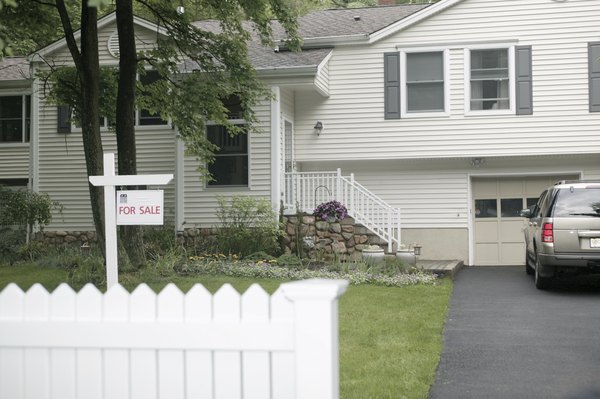A Second Home and Capital Gain Tax Rules
You must live in your home for a certain period of time to avoid capital gains tax.
Comstock/Comstock/Getty Images
When it comes to capital gains taxes, the Internal Revenue Service draws a hard line between homes used as principal residences and investment properties. You can usually sell your primary home without worrying about taxes, but different rules apply to vacation homes and rental properties.
Calculating Capital Gains
If you sell your second home, your capital gains is the portion of the proceeds that exceeds what you paid for the property, minus the cost of any improvements you made over the years. You can deduct many of the closing costs associated with the sale from your proceeds, however.
As of 2019, the tax rates for long-term capital gains are 0 percent, 15 percent and 20 percent, based on your income. For example, a taxpayer filing single or married filing separately won't pay any capital gains tax with an income of $39,375 or less ($52,750 if you file head of household and $78,750 for married filing jointly).
For single filers with income from $39,376 to $434,550, the long-term capital gains tax rate is 15 percent ($39,376 to $244,425 for married filing separately, $52,751 to $461,700 for heads of household and $78,751 to $488,850 for married filing jointly). Taxpayers with incomes above these thresholds will pay a long-term capital gains tax rate of 20 percent.
Principal Residence Capital Gains Eligibility
If you live in your home for two out of the five years immediately preceding its sale, the IRS says it's your principal residence, and you probably won't pay capital gains tax. Under the terms of the Taxpayer Relief Act of 1997, if you meet this test, you can exclude $250,000 in capital gains from taxation, and this increases to $500,000 if you're married and file a joint return. If you don't realize a profit this great, you don't have to include the gains on your tax return.
The IRS is somewhat particular about proving that you lived in your home for this period of time, however. You might have to substantiate your residency with your driver's license and your voter's registration records, as well as demonstrate that it's within reasonable distance of your place of employment. This is particularly true if you own two residences – the IRS will want to know which was actually your home.
If you never lived in the residence full time, such as if you only used it as a vacation home, you typically can't qualify for the exclusion.
Second Homes Capital Gains Exclusion
The Housing Assistance Act of 2008 put the kibosh on being able to exclude $250,000 or $500,000 from capital gains tax on the sale of a second home, although this legislation applies mostly to investment properties. You may qualify for a partial exclusion, however, if you lived in the residence for two years or more and treated it as an investment property the rest of the time.
For example, if you owned the property for five years, and if you rented it out for the first three years then moved in yourself for the remaining two years, you would be able to exclude 40 percent of your profit from capital gains tax because you used the property as your primary residence 40 percent of the time. If you lived in the property for two years then rented it out for three years, however, you would qualify for the exclusion because it was your primary residence first.
Second Homes 1031 Exchange Exclusion
If you treated your second home as an investment property, you could potentially escape capital gains tax through a 1031 exchange, but this means reinvesting in a relatively short period of time. A 1031 exchange involves placing your profits from the sale with a third party, such as a bank or a title company. You must then select a new property to invest in within 15 days of the sale of the first property and close on its purchase within six months.
References
Writer Bio
Beverly Bird has been writing professionally for over 30 years. She specializes in personal finance and w, bankruptcy, and she writes as the tax expert for The Balance.

